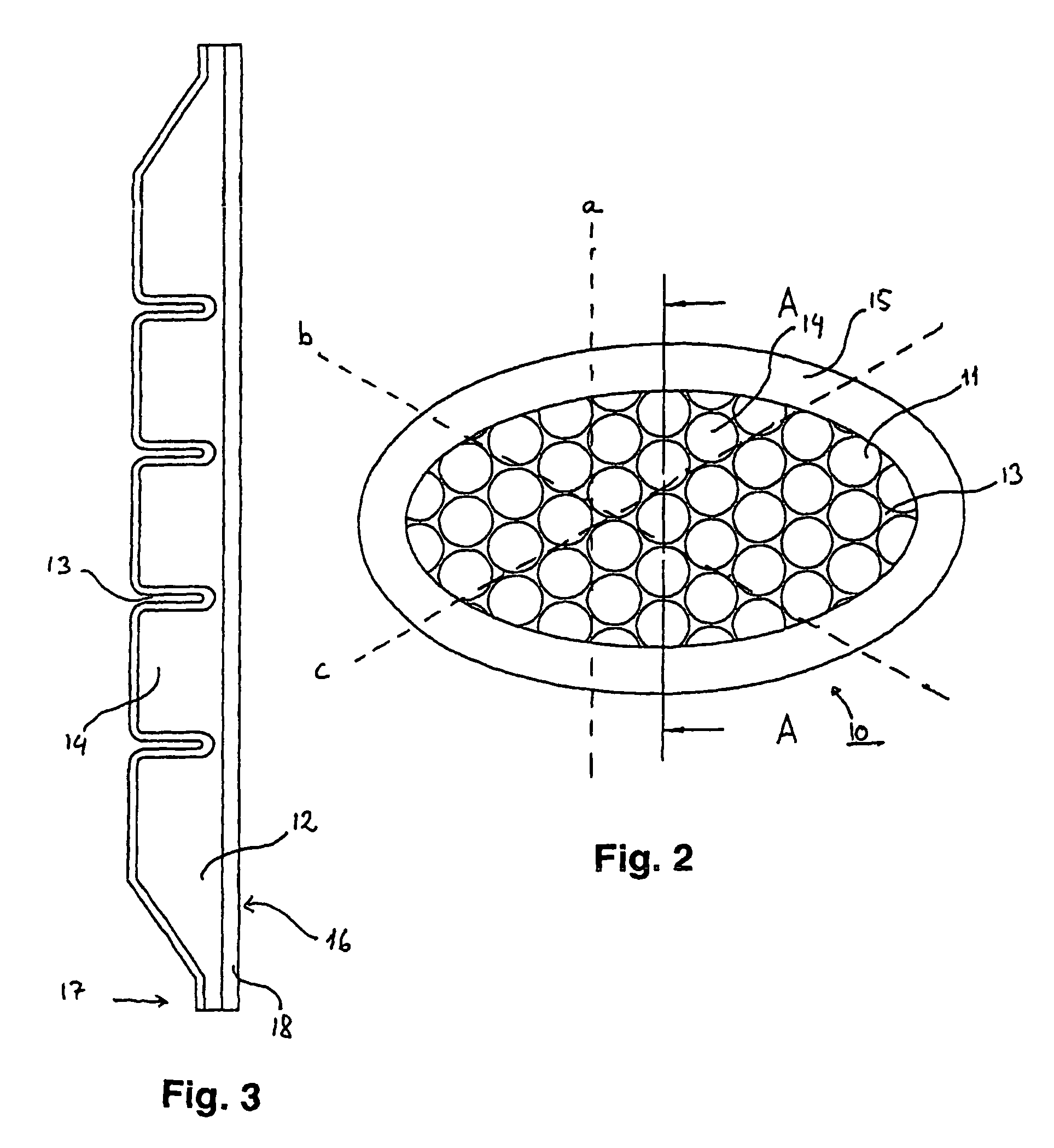Dressing
a technology for dressings and dressings, applied in the field of dressings, can solve the problems of unintended detachment of dressings, slipping of adhesives, uneven edges,
- Summary
- Abstract
- Description
- Claims
- Application Information
AI Technical Summary
Benefits of technology
Problems solved by technology
Method used
Image
Examples
example 1
Comparison of a Dressing of the Invention with Conventional Dressing on Elbow
[0076]Dressings of the invention were made from blanks comprising a backing layer and a layer of skin-friendly adhesive as disclosed in U.S. Pat. No. 4,367,732 using a press and using a mould made from aluminium and having a surface corresponding to the desired pattern of indentations. The width of the indentations was about 1 millimetre and the transverse measurement of the areas between the indentations was about 5 millimetres. The mould was then suitably closed using a pressure of up to 10-40 metric tons at a temperature of about 90-110° C. for 1-3 seconds. Controls were prepared using identical blanks but only impressing a bevelled edge.
[0077]In a preliminary test, dressings of the invention were tested on a volunteer for covering an elbow and compared with a corresponding dressing without indentations. The dressing of the invention showed a much longer wearing time of 10-12 days as opposed to about 4 d...
example 2
Test of Dressing not According to the Invention having Indentations in Adhesive Surface Facing the Skin to be Covered on Bend of Elbow
[0085]Dressings corresponding to the dressing of the invention tested in Example 1 but having the indentations at the adhesive surface for contacting the skin instead of in the surface covered by the backing layer were prepared. The dressings were tested on two volunteers for covering the bend (cubital area) of an elbow and both test persons reported that the feeling was utmost uncomfortable due to pinching effects.
example 3
Comparison of a Dressing of the Invention with Conventional Dressing on Palm of the Hand
[0086]Dressings according to the invention as tested in Example 1 were tested on volunteers on the palm of the hand and compared to controls as in example 1.
[0087]In total 40 dressings were tested on 40 volunteers and the number of dressings staying in place after 24, 48, and 72 hours normal daily routine was recorded. The dressings according to this invention showed an extended wear time when applied to the palm of the hand as compared to the controls. The average wear time of the dressings of the invention (A) was found to be clearly longer than the wear time of the controls (B). The results are summarized in the below Table 2 stating number of dressings still being in service and show that the dressing according to the invention shows a longer average use time than a corresponding dressing without indentations.
[0088]
TABLE 2Remaining DressingsTime HoursAB241917481067232Average use (Hrs)3023
PUM
| Property | Measurement | Unit |
|---|---|---|
| size | aaaaa | aaaaa |
| size | aaaaa | aaaaa |
| transparency | aaaaa | aaaaa |
Abstract
Description
Claims
Application Information
 Login to View More
Login to View More - R&D
- Intellectual Property
- Life Sciences
- Materials
- Tech Scout
- Unparalleled Data Quality
- Higher Quality Content
- 60% Fewer Hallucinations
Browse by: Latest US Patents, China's latest patents, Technical Efficacy Thesaurus, Application Domain, Technology Topic, Popular Technical Reports.
© 2025 PatSnap. All rights reserved.Legal|Privacy policy|Modern Slavery Act Transparency Statement|Sitemap|About US| Contact US: help@patsnap.com



